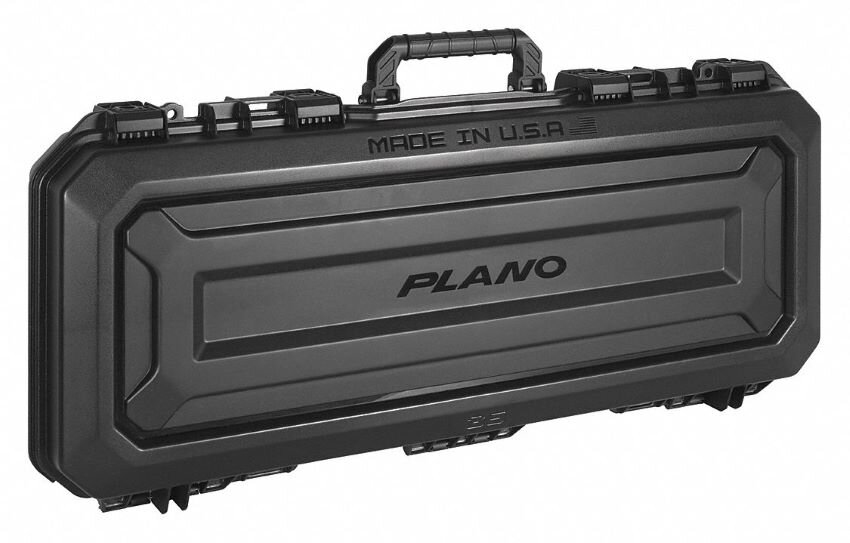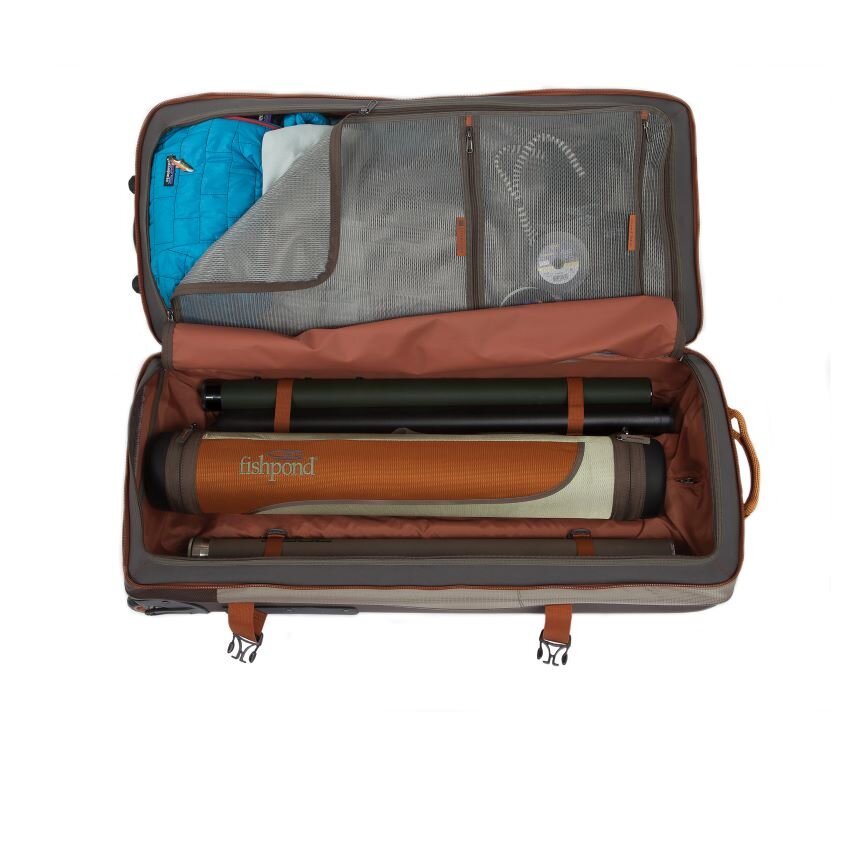Solutions for When You’re Forced to Check a Travel Rod Tube
After the security staff at the Mazatlan airport forced me to check my travel rod tube when flying home to the US, I was forced to reexamine how I’d travel with multi-piece rods in the future. Based on past experiences in Alaska, Brazil and within the lower 48, I’d naively assumed that so long as the rods fit the airlines’ size limitations that they wouldn’t be a problem. The Mexican authorities thought otherwise.
I was fortunate that my three rods made it home safely, due in large part to my sturdy Sage Rod Tube. I cannot stress this enough – if you are going to travel with multi-piece rods, there are plenty of ways to protect them. We’ve outlined some options here and here. Even if they end up in the overhead compartment or at your feet on the plane, there’s still a chance that they can get stepped on or crushed. Don’t take unnecessary chances.
But what if you’re going someplace that will not allow the tube on the airline? You can check it by itself, as I was forced to do. That raises three potential issues: First, it could get crushed; second, it could get lost; and third, it could cost you a fee for an extra bag.
One solution would be to go to four- and five-piece rods, which can be packed in smaller cases and then put in just about any checked bags. We’ve been experimenting with some from Arundel Tackle and Cast Division, and so far we’ve been impressed. They are typically a little more expensive, however, and for those of you already resistant to three-piece sticks they may be a tough pill to swallow.
With that set of factors in mind, I set out to find solutions for checking your 30-36” tube within your larger piece of luggage. Here are some ideas:
SKB iSeries Fly Fishing Case
I have SKB’s Rod Pod and think it is one of the most durable pieces of gear I own. They’ve built this piece of luggage specifically to hold four rod tubes and associated equipment. It also has a space for “waders and other accessories,” which could easily be used for clothing, tackle or other gear. With only two tubes versus the maximum four, that leaves even more room.
Advantages: Super-durable, padded interior, resistant to impact damage, lifetime warranty and $1,500 reimbursement for damaged contents.
Disadvantages: Pricey; at nearly 18 pounds empty, will limit how much gear you can transport; hard sides may not be good for float planes.
Pelican Cases
While Pelican doesn’t make a rod tube-specific case like SKB, their hard travel cases are renowned by travelers toting fragile equipment around the world. Hanna recently bit the bullet and purchased their largest wheeled carry-on for her photographic equipment, tired of worrying about it when she has to gate check her roller bag. They make a wide variety of long cases, with options to customize the insides for specific pieces of luggage.
Advantages: Worldwide reputation for durability; highly customizable foam inserts; lifetime guarantees.
Disadvantages: As with the SKB, many of the Pelicans are quite heavy and expensive.
Long Gun or Bow Cases
Much like SKB’s product, above, cases made to transport rifles, shotguns or bows are by design meant to protect valuable items that need to be treated carefully. They’re available in a variety of sizes from companies like Plano,
Advantages: If you travel to hunt you may already own one; otherwise, readily available at many local sporting goods shops. Depending on the brand, they may not be as expensive as the SKB.
Disadvantages: While it’s certainly legal to check firearms in for air travel, you may get unwanted or extra scrutiny from fellow travelers and airline agents, as well as nosy baggage handlers.
Wheeled Duffels
There are lots of drop-bottom duffels on the market that are voluminous and comparatively inexpensive. G.Loomis used to make a great one that I overabused and eventually wore out. Get a 36”+ model with a hard bottom, and you can stick a small rod tube in the bottom with lots of space left over for other gear. Just make sure that the interior dimensions are large enough for whatever you intend to place inside. We had to send two 35” bags back to Amazon because they did fit our 33” tubes. Also make sure that it doesn’t exceed your chosen airline’s size restrictions (linear inches). Be sure to look into bags from the golf, hockey and hunting worlds. They may not be equally inexpensive, but can get the job done. For example, the Sitka Nomad looks like a beast. There are of course also non-wheeled cavernous models like this reasonable waterproof one from Cabela’s, but they can be a bear to organize and to carry.
Advantages: Often reasonably inexpensive; can do double-duty on non-fishing trips; hold a ton of gear.
Disadvantages: Soft sides represent some vulnerability. Zippers may wear out if overstuffed. Check airline regs to make sure you won’t pay oversize fees.
Fishpond Grand Teton Rolling Luggage
While admittedly this bag should fall within the “Wheeled Duffel” category, above, it seems to be in a class of its own for our stated purpose. Within the compression-molded base it has “cradles” for six rod tubes. Indeed, everything about it is made for fishing, with a coated base compartment that prevents water from damp items from leaching into your dry gear on the other side.
Advantages: Made specifically for this purpose, with rod tubes in mind. I’ve been super-impressed with the high-quality of everything I’ve seen from Fishpond, including Tim Romano’s Thunderhead Submersible Duffel.
Disadvantages: At approximately $400, it’s an investment.
Coming soon: I’ll tell you a little bit about the option I’ve purchased — yet to be battle-tested.

















